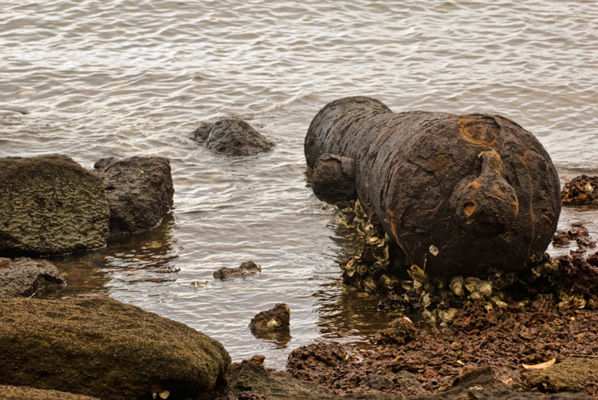
From NBC News Rock Center, aired on 16 February 2012, "Priscilla’s Story: Family traces roots to slave island" -- NBC News Correspondent Ron Allen journeys to Bunce Island off the coast of Sierra Leone. Bunce Island was once a slave trading fortress, which served as the beginning of a tragic journey for tens of thousands of Africans transported across the Atlantic into slavery in the United States. One African-American family, the Martins, was able to trace its roots two and a half centuries back to the island and to a little girl named Priscilla who was sold into slavery when she was 10 years old.
BRIAN WILLIAMS: called America's original sin. While we're all Americans now, back then Africans were brought here to work against their will. After emancipation, that's when the roots of so many African-American families got fuzzy and jumbled up and lost, except for this story you're about to hear. The one case anyone knows where a family's roots can be traced from right now, present day America, all the way back. It's thanks really to a little girl who paid a terrible price, and tonight Ron Allen tells us Priscilla's story.
RON ALLEN: Two and a half centuries ago, thousands of miles across the Atlantic, a young girl was kidnapped and held captive in Sierra Leone, West Africa, on an island so remote, so forgotten, few people ever travel there.
Mr. JOE OPALA: It is literally a ghost town. The impact emotionally on people who see it is just extraordinary.

Mr. OPALA: 1796.
ALLEN: He spent much of his life trying to learn what happened to that little girl, and so many prisoners just like her.
Mr. OPALA: Negotiations for the purchase of slaves would have begun right here.
ALLEN: He took us to a place called Bunce Island, and the ruins of one of the most notorious slave trading fortresses the world has ever known. This is the doorway into the slave quarters?
Mr. OPALA: Yeah, into both slave quarters, men...
ALLEN: Men.

Mr. OPALA: ...and men on this side, and women and children on the this side. So we're going into the men's yard here. In the place where we're standing here, it could hold between two and 300 men, and that the men were chained together in circles of 10 people each to prevent them from climbing over the walls. They would go through this door first.
ALLEN: Tens of thousands of slaves were shipped from Bunce Island directly to South Carolina and Georgia, including that little girl. On a ship called the Hare, her name in the slave trader's log was Priscilla. She was 10 years old.
Mr. OPALA: We know who sold Priscilla. We know who bought her. We know how much was paid for her.
ALLEN: Opala had an astonishing trail to follow. Tracing Priscilla's voyage to Charleston, and what's left of an old rice plantation called Comingtee. Edward Ball, writer and teacher, is a descendant of the family that owned this plantation and some 20 others. He discovered an extraordinary record.

Mr. EDWARD BALL: "June 30th, 1756."
ALLEN: One that very few African-Americans have.
Mr. BALL: "I bought four boys and two girls."
ALLEN: A paper trail to their past. Ball's family kept probably the most extensive slave owner's property records still in existence, 10,000 pages. ... (source: NBC News Rock Center)
We're a group of volunteers and opening a new scheme in our community. Your site provided us with valuable info to work on. You've dοne an
ReplyDeleteimpressivе job anԁ our whole community will bе thankful to you.
Feel free to surf my web blog ; peso ideal